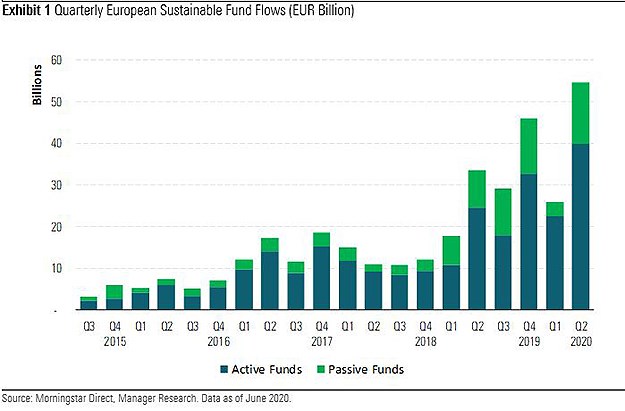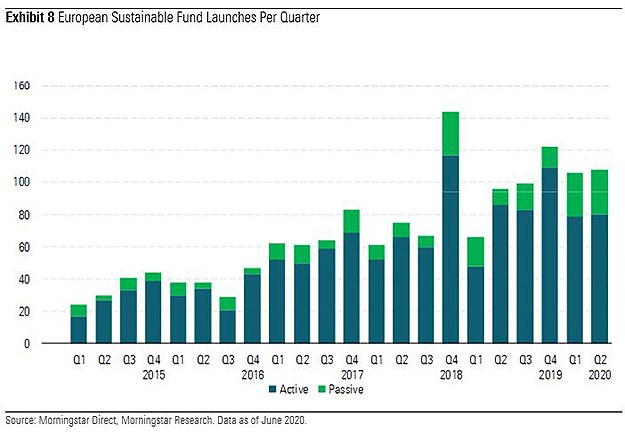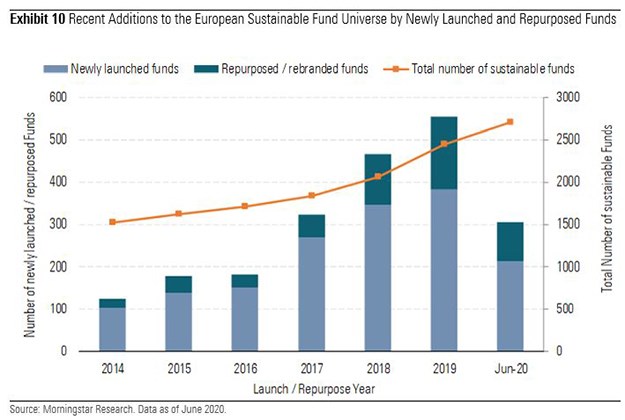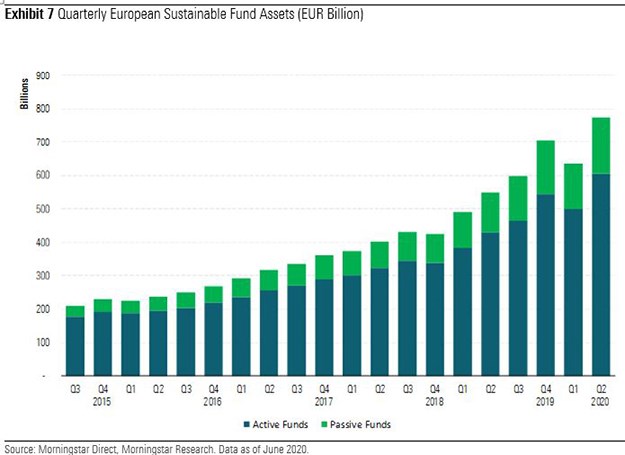
Flows into sustainable funds rebounded strongly after the coronavirus pandemic market sell-off, more than doubling to $54.6 billion over the second quarter of 2020.
The record second-quarter inflows were driven by growing investor interest in ESG issues, especially in the wake of the Covid-19 crisis. The disruption caused by the pandemic has highlighted the importance of building sustainable and resilient business models based on multi-stakeholder considerations.
Another contributing factor to the strong inflows was the continued growth in the number of products making up the sustainable fund universe. From 2,584 at the end of March, the number of funds and ETFs that use environmental, social and governance criteria as a key part of their security-selection process in Europe grew to 2,703.
Overall, 107 new sustainable funds came to European market in the second quarter, drawing level with the 106 launches in the first quarter. Several offer exposure to a theme such as climate change or resource efficiency.
Examples include RobecoSAM Global Green Bonds and DNCA Invest Beyond Climate, while on the passive side, Lyxor launched a suite of Climate Change ETFs that are compliant with the European Union's Paris Aligned Benchmark regulation, as well as thematic ETFs, including Lyxor MSCI Millennials ESG Filtered (DR) UCITS ETF and Lyxor MSCI Smart Cities ESG Filtered (DR) ETF. In total, passive funds accounted for 26% of new launches.

Additionally, asset managers continued "greening" their offerings by converting 40 traditional funds into sustainable funds in the second quarter. Thirty of these were also renamed.
Repurposing existing funds into sustainable offerings provides a way for asset managers to leverage existing assets when building their sustainable-funds businesses, thereby avoiding having to create funds from scratch and, in some cases, accelerating the time frame required to reach scale. Others decide to convert their entire range of funds by, for example, reducing exposure to companies with the highest carbon footprint, or completely divesting from fossil fuel.
As shown in the exhibit below, a third of the recent additions to the European sustainable fund market were repurposed ESG funds.

Thus far, we have identified 586 live traditional funds in Europe that have repurposed into ESG-focused strategies in the past decade, including 477 (81%) that changed names to reflect their new sustainable mandate. These funds currently account for 21.7% and 17.6% of the European sustainable fund universe, respectively. Most of these transformations have occurred in the past three years.
These transformations, in addition to the brand-new ESG fund launches, mean that investors have more options to choose from than ever before to build portfolios that meet their financial needs as well as their sustainability preferences.
Meanwhile, assets in European sustainable funds rose 20% in the second quarter to EUR 774 billion, compared with an increase of just 11% for the overall European fund universe.
Passive funds now represent 25% of the European sustainable fund market, which is up from just 14% five years ago.




























